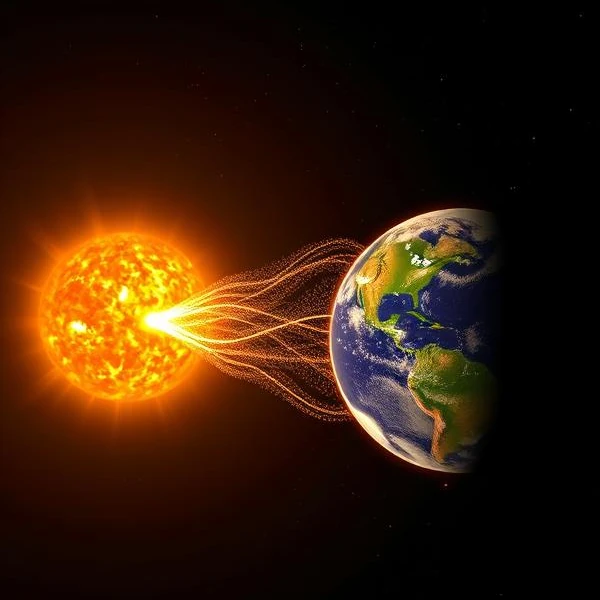
Solar winds have several remarkable characteristics that make them unique and essential in the study of interplanetary space and solar phenomena. Solar winds are streams of charged particles, mainly protons and electrons with a small proportion of helium nuclei and traces of heavier ions, which form a plasma, a state of matter where particles are ionized and conduct electricity. They originate from the solar corona, where extremely high temperatures allow particles to escape the Sun's gravitational pull.
The Sun continuously produces 380 billion billion megawatts (≈ 3.8 × 1026 W) and has been doing so for 5 billion years. The most spectacular manifestations during periods of intense magnetic activity are the appearance of sunspots and prominences. The number of sunspots gradually increases during the ≈ 11-year cycle.
Solar winds fill interplanetary space, creating a dynamic environment that affects planets, comets, and other celestial objects. They carry the solar magnetic field with them, creating an interplanetary magnetic field that extends throughout the solar system. On planets without a strong magnetic field, like Mars, solar winds can erode the atmosphere over time. Solar winds interact with the planetary magnetospheres, causing phenomena such as auroras on Earth.
Particles from solar winds can pose a danger to astronauts and the electronic equipment of satellites and space probes. The protons and heavy ions present in solar winds are forms of ionizing radiation. When they penetrate human tissues, they can cause cellular damage, increasing the risk of cancer, long-term health problems, and acute radiation syndromes. Energetic particles can damage the electronic components of satellites and space probes. They can cause errors in integrated circuits, damage solar cells, and reduce the lifespan of equipment.
Solar winds contribute to the formation of the heliosphere, a protective bubble that surrounds the solar system and shields us from galactic cosmic rays. The interaction of solar winds with the interstellar medium defines the boundaries of the heliosphere, marked by the heliopause.